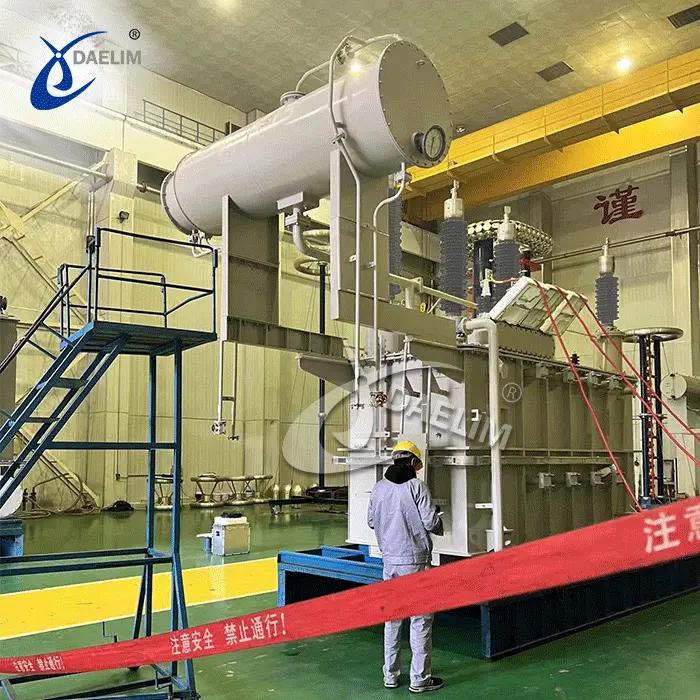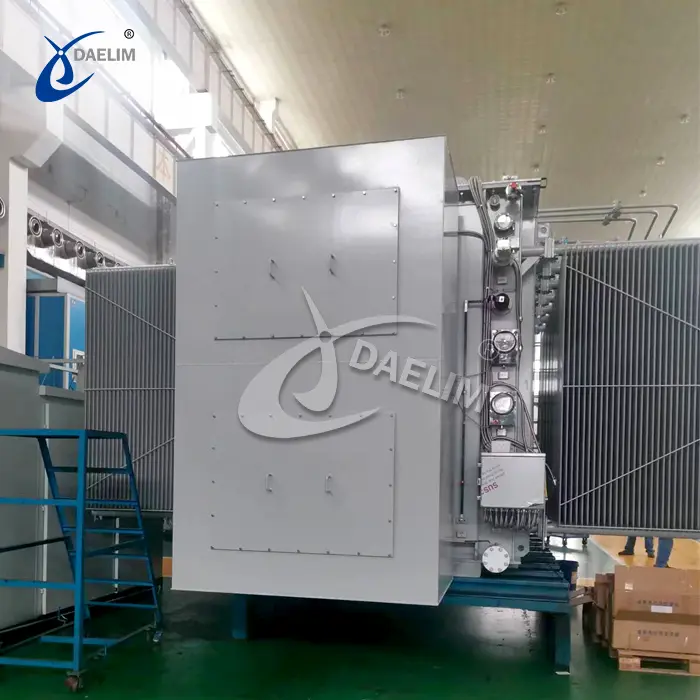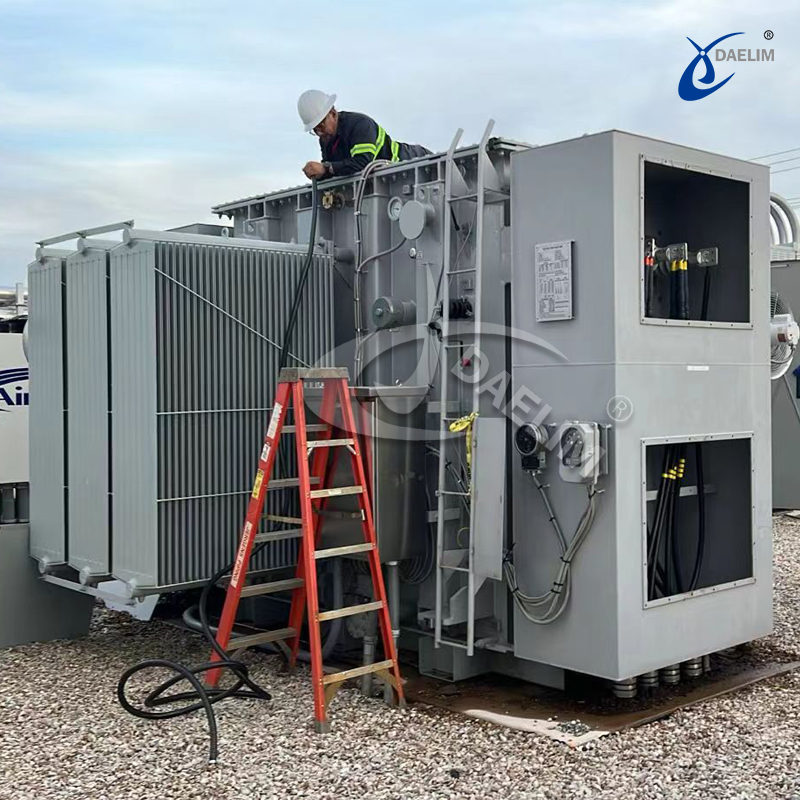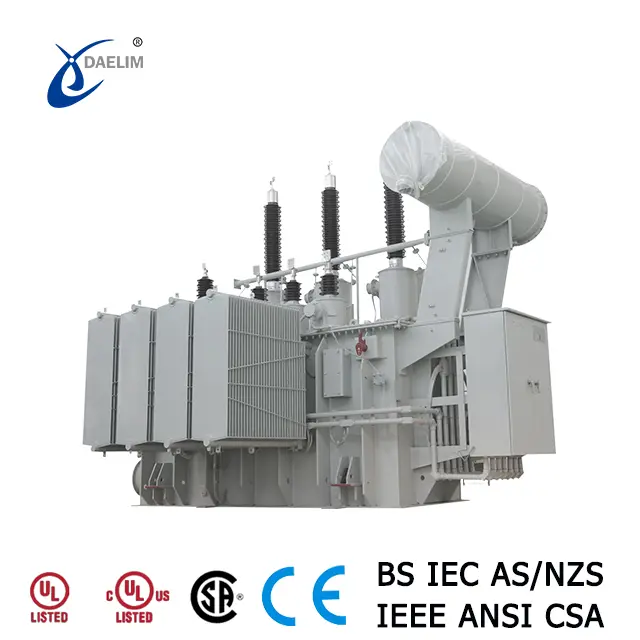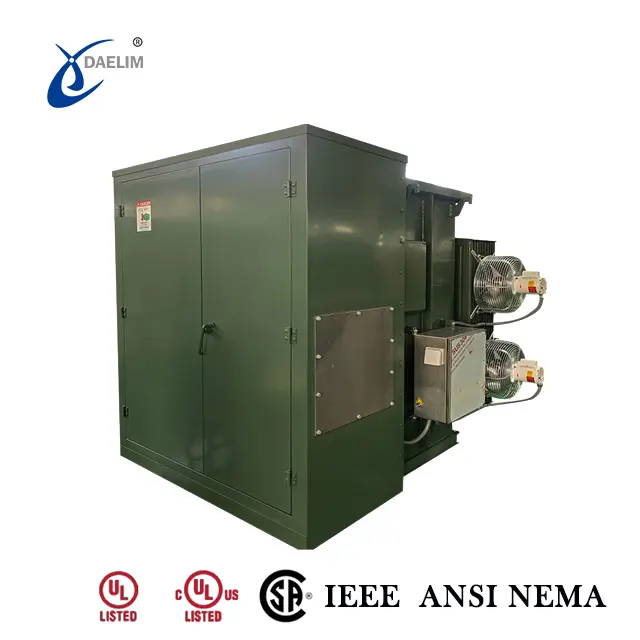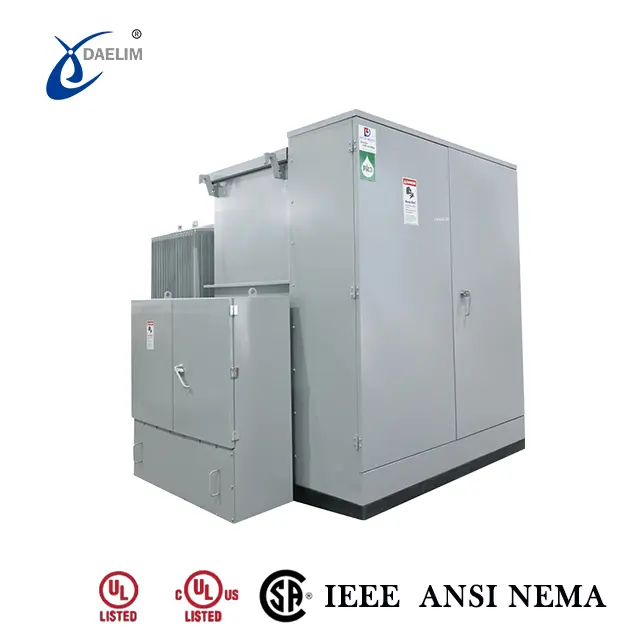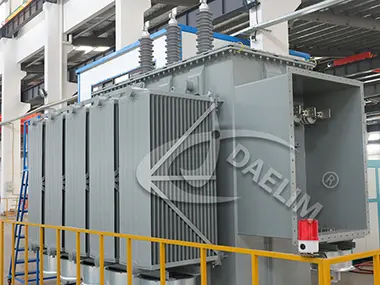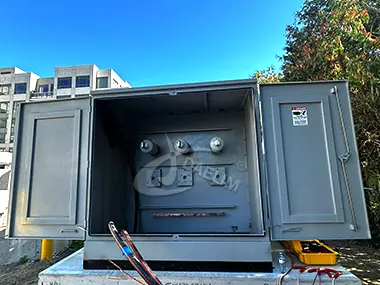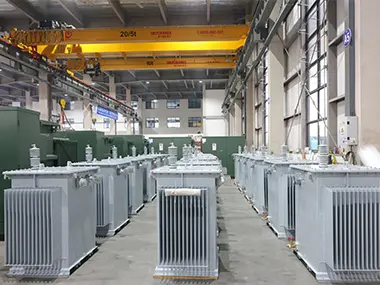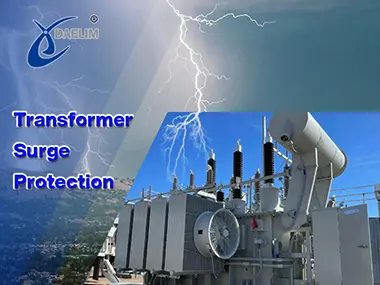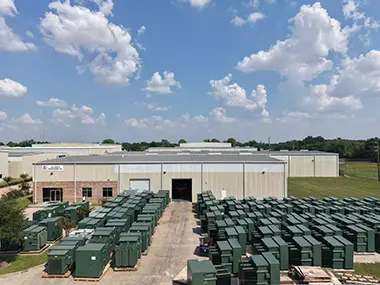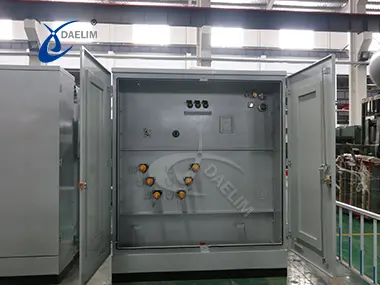A Complete Guide to Nuclear Power Plant Transformer
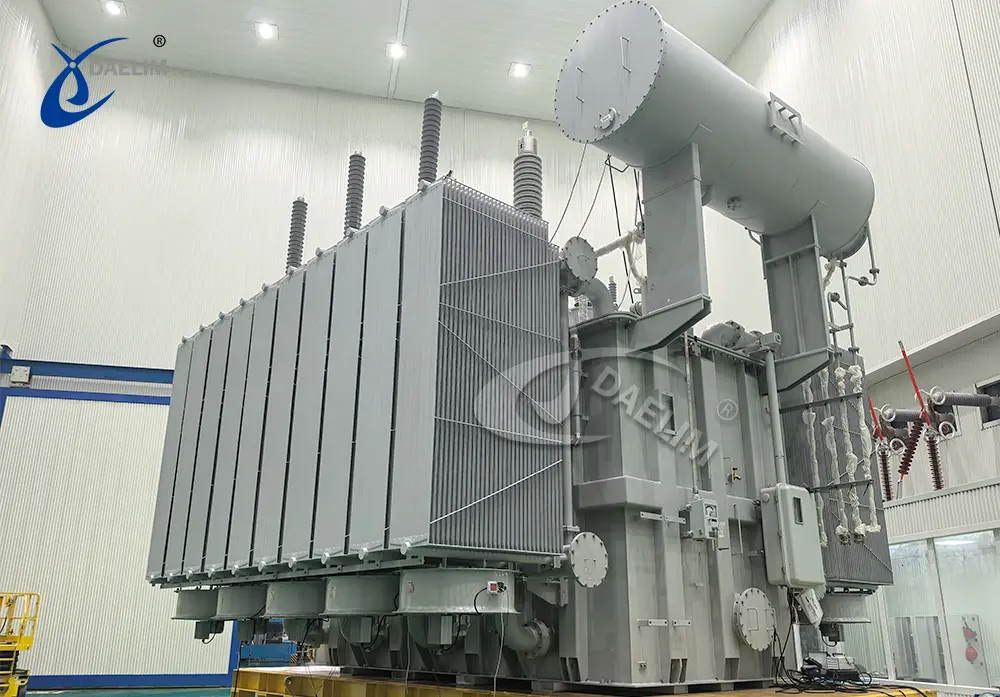
Electric Transformer are a key part of our Electricity Distribution system and the nuclear power plants are becoming one of the most important sources of electricity production. so a new trend in the Electrical Transformer industry is merging and that is the design and manufacturing of nuclear power plant Transformers. Unlike any other Electrical Transformer these transformers are subjected to extreme operating conditions and there are certain requirements that these transformers need to satisfy.
This article is for engineering students and technicians who are interested in nuclear power plant transformers and want to understand their design, performance requirements, performance requirements and key features.
Contact Daelim TransformerWhat Is a Nuclear Power Plant Transformer?
Nuclear power plant transformer is a special Electrical Transformer that is specifically designed and developed to satisfy the unique and extreme operating conditions, meet the safety requirements, and fully satisfy the environmental demand of the nuclear power plant generating electricity. Unlike any Standard Electrical Transformer the nuclear power plant Transformer needs to perform reliably under extreme thermal and radiation conditions.
The nuclear power plant generates electricity using a process called Nuclear Fission reaction in which a huge amount of heat energy is produced and that heat is further used to convert water into steam and that steam is then used to rotate turbines. The turbine rotates the generator that produces a huge amount of electrical power.
This huge amount of electricity produced by the electrical generator is then received and regulated by the nuclear power plant transformer that ensures that this electricity is delivered to the national grid station in a safe and reliable manner. These transformers are also responsible for auxiliary operations and also responsible for providing power to the safety system.
You may enjoy: Daelim Transformers Solution For Renewable Power Plant
Working Principle of Nuclear Power Plant Transformer
The Reactor Transformer working principle is like the working of any standard Electrical Transformer and that is they work on the Faraday Law of electromagnetic induction. According to this law when electrical voltage is provided at the primary section of the Electrical Transformer the core of the transformer changes the electric field and changing magnetic field induces a voltage across the secondary winding of the Electrical Transformer.
However the scale at which this working principle of Faraday Law of electromagnetic induction is being executed is large and the insulation of the Electrical Transformer and other equipment around the Electrical Transformer and the protection mechanism provided in the Electrical Transformer is much more advanced and complex than the ordinary standard Electrical Transformer.
In nuclear power plants the nuclear power plant transformer is responsible for three main things.
- Nuclear power plant transformer is responsible for regulating electrical voltage provided by the nuclear power plant generator. The transformer most of the time steps up the electrical voltage so that it can be transmitted to the national grid station and further.
- The nuclear power plant transformer ensures the isolation of the electrical circuits and electrical components from direct contact with high electrical power generating plants. This helps prevent and limit the electrical faults in electrical circuits.
- The transformer of the electrical power plant also makes sure that the system remains stable during load change or during any fault in the system. This is called impedance control and nuclear power plant transformers must perform exceptionally well in this.
Types of Transformers Used in Nuclear Power Plants
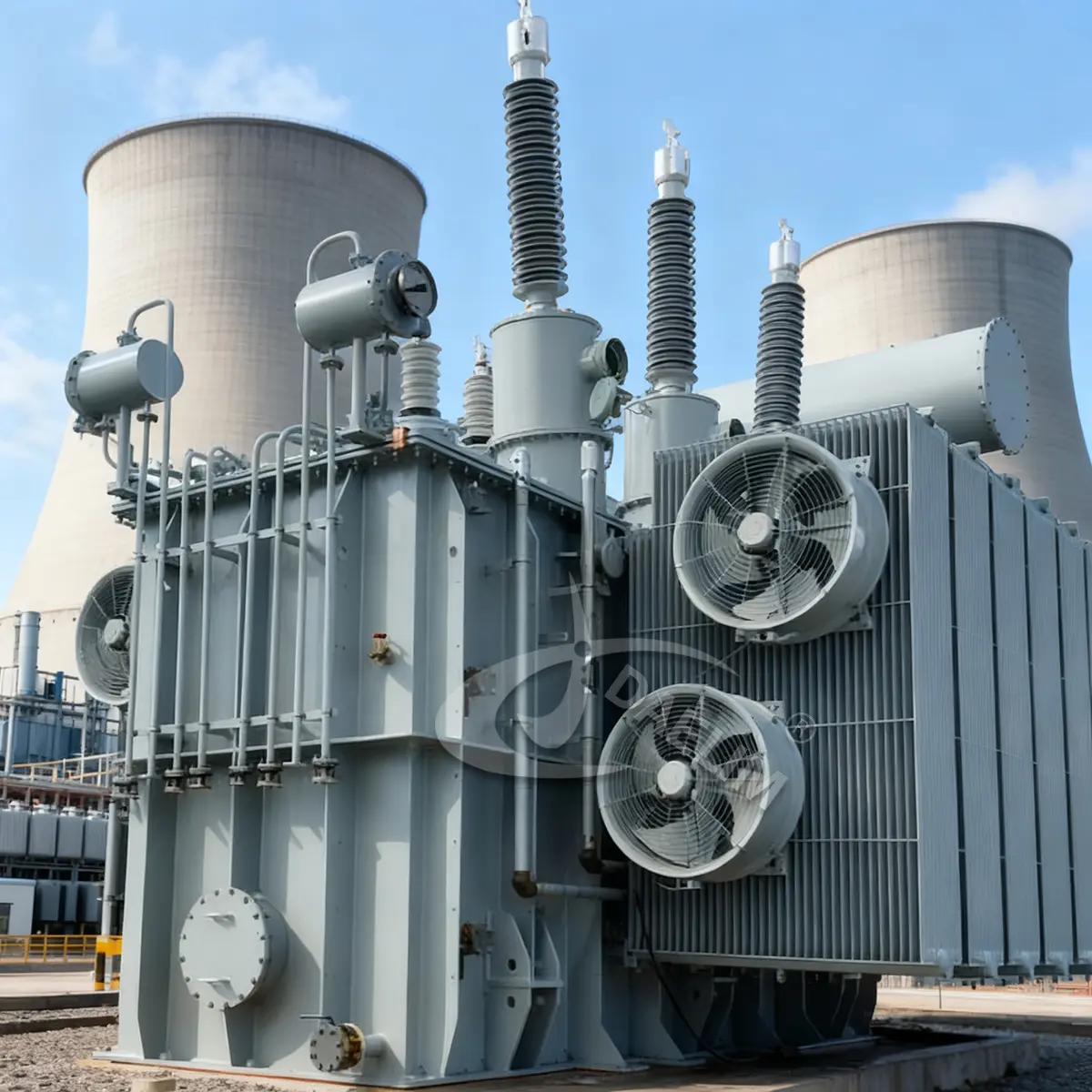 In a single nuclear power plant there are multiple types of electrical Transformers being installed and operated and each transformer is for dedicated work. For any given nuclear power plant. There are about four different types of Electrical Transformer installed to satisfy four different requirements.
In a single nuclear power plant there are multiple types of electrical Transformers being installed and operated and each transformer is for dedicated work. For any given nuclear power plant. There are about four different types of Electrical Transformer installed to satisfy four different requirements.
Step Up Power Transformer
The first and the most obvious type of Electrical Transformer that is installed in nuclear power plants is a step up transformer in power plant Electricity production distribution. This type of power transformer is responsible for receiving the main electricity supply from the generator of the nuclear power plant and then regulating it and set-up it for distribution to the national grid station. This step up power transformer for the nuclear power plant will be installed near the turbine generators as its only work is to receive and regulate the electricity that will be distributed to the national grid station.
Reading more: Step Up Transformer VS Step Down Transformer
Station Service Transformers
The nuclear power plant is a huge facility where a number of processes are being carried out in order to generate electricity. In a nuclear power plant we have a nuclear reactor that generates heat to convert water into steam and then steam is used to run the turbine and there are a number of safety systems installed to safely do all these works. So in order to provide electricity to the auxiliary system like cooling fan feed water pump and digital control system a separate station service transformer is also installed in the nuclear power plant. Its main function is to regulate the electricity required for the systems of the nuclear power plant.
Get it free: Step-by-Step Guideline On Installing A Transformer
Emergency Transformers
The nuclear power plant and especially the reactor of the nuclear power plant can be proven very dangerous for the surrounding environment if any of the system fails. so in order to provide electricity to the auxiliary system of the nuclear power plant in case of any emergency or during the failure of the main transformer, there is an emergency Transformer installed and fully wired into the system of the nuclear power plant so that during any failure or emergency condition that emergency Transformer can be used to work as a substitute or alternate of main Electrical Transformer
Key Design Features of Nuclear Power Plant Transformers
The nuclear power plant Transformer has all the features of any standard Electrical Transformer however due to the complexity of the nuclear power plant operations there are some other features that are specifically designed and developed into the Transformer to make it eligible for working in a nuclear power plant. The following are 5 features of a nuclear power plant transformer.
- The material used in the nuclear power plant transformer needs to be radiation resistant material because the Electrical Transformer in such an application will be subjected to high levels of radiation as the nuclear power plant main source of energy is uniform of radiation. During the manufacturing of nuclear power plant transformers the use of epoxy resin, special gaskets and special metallic material that can resist the penetration of neutrons in them are used.
- As nuclear power plants start their operation and remain operated throughout their lifetime without any chances for regular maintenance schedule. The continuous operation of the nuclear power plant puts a special requirement of high thermal stability on its Electrical Transformer. The Transformer for the nuclear power plant should be designed and developed in a manner that it can operate under continuous thermal load without compromising the safety, reliability and efficiency.
- Another unique feature of the nuclear power plant is their dedicated cooling mechanism that is specifically designed and developed to cool the Electrical Transformer being operated in the nuclear power plants. The nuclear power plant Transformer will have dual cooling path using oil natural air forced and oil post air forced cooling mechanism to ensure efficient cooling of the Electrical Transformer under any condition or when there is any fault in the system.
- The nuclear power plant Transformers are designed to last longer than any other standard Electrical Transformer. These Transformers are designed in such a manner that they reduce insulation aging and have minimum arc flash risk.
- The electrical Transformers that are specifically designed and developed for nuclear power plants are designed in such a manner that they can survive earthquakes with minimum deformation to their main parts.
Learn more about Transformer Design
Selection Criteria for Nuclear Power Plant Transformer
Nuclear power plant Transformers are dedicated Transformers and they are always specifically designed and developed for nuclear power plant application. So the selection of a nuclear power plant transformer is not like selecting a transformer from different Transformers available, it is like selecting a nuclear power plant Transformer that is suitable for the scale of a nuclear power plant for which you need an electrical transformer.
Following is the six-point selection criteria for nuclear power plant transformers.
- The first factor is the power rating of the nuclear power plant generator which generates electricity. The nuclear power plant generates about 100 to 1500 MVA of electricity mostly depending on the reactor size.
- The second factor is the voltage level which the generator of the nuclear power plant reactor produces during production. The nuclear power plant transformer must match this voltage rating.
- Another factor here is the cooling method you need for the specific nuclear power plant. The cooling method depends on the capacity of the power plant generator, operating environment, loading conditions and other factors of the nuclear power plant.
- One unique selection criteria of the nuclear power plant transformer is that the Transformer must satisfy the class 1E certification. This certification is about the electrical equipment that will be used in or around the nuclear reactor and it is mostly about the safety of the system.
- The operating conditions of the nuclear power plant also play an important role in selecting the right nuclear power plant transformer for example nuclear power plants that utilise salt water for cooling purposes need salt water corrosion resistance in their Electrical Transformer cooling system or nuclear power plants whose operating conditions involve high humidity or have elevated temperature zone need an Electrical Transformer that can resist and operate efficiently in these operating conditions.
- The reliability matrix of the Electrical Transformer is another very important factor in the selection criteria of the nuclear power plant Transformers selection. An Electrical Transformer that will be selected for the nuclear power plant should have high MTBF and should have low failure rates to minimise the downtime of the nuclear power plant.
Nuclear Plant Transformer Installation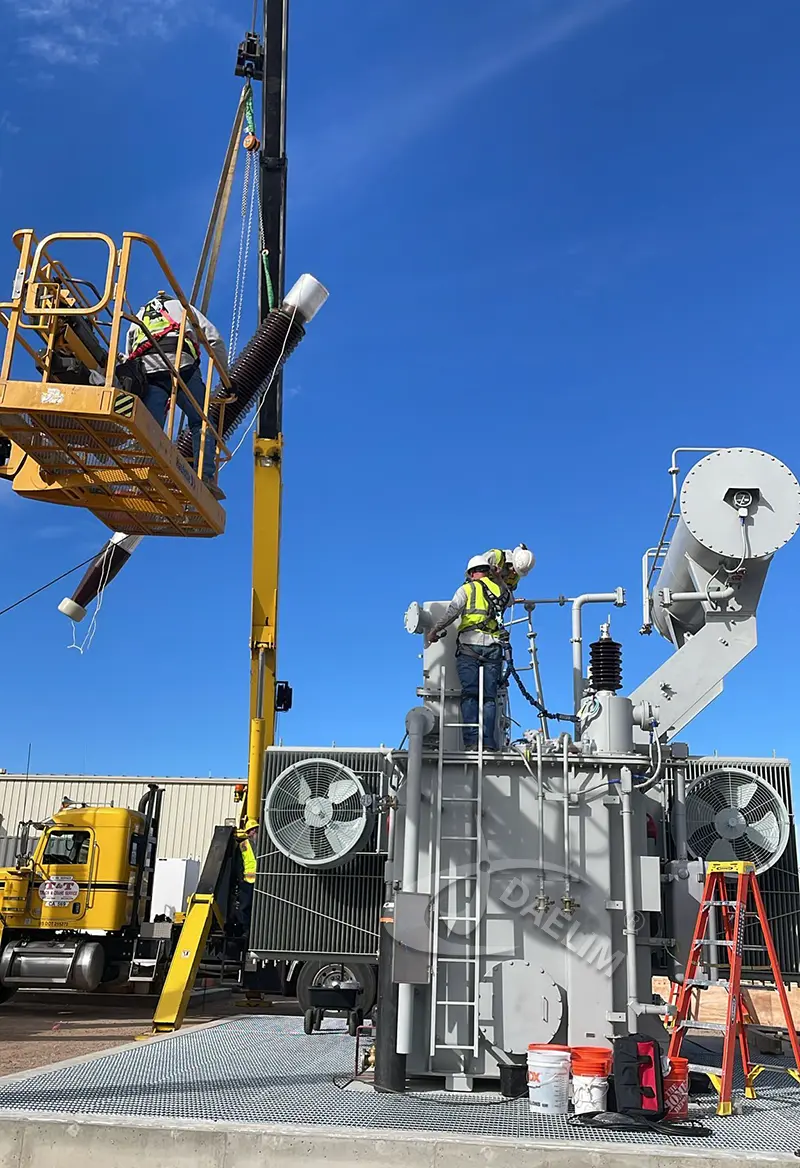
Due to the complexity of the nature of the work happening in a nuclear power plant the installation of the nuclear power plant transformer is also a bit different from the installation of standard Electrical Transformer. There are 4 main points that you need to consider during the installation of a reactor transformer.
Site Preparation
The installation of the nuclear power plant Transformer involves site preparation in which the area on which the Electrical Transformer will be restated needs to be made earthquake-proof, you need to develop and you need to develop the shield zone under which the Electrical Transformer will be installed.
Radiation Shielding
In the case where the Electrical Transformer is installed near to the reactor where there is a chance of radiation exposure the Transformer needs to be prevented and shielded from the radiation. A dry type Electrical Transformer can be installed near a radioactive zone with lead concentrate shielding around the Electrical Transformer to protect it from radiation.
Grounding and Surge Protection
As nuclear power plants use nuclear energy to produce steam that in return powers turbines, there are chances of some sudden voltage spikes and surges in the electricity during the normal operation of the nuclear power plant. So to protect the Electrical Transformer and the electrical equipment around the Transformer, proper grounding and surge protection equipment should be installed on the Electrical Transformer and the other electrical equipment around the power plant.
Remote Monitoring
As nuclear power plants have radiation that is very harmful for human life, to monitor the Electrical Transformer day-to-day performance without being exposed to the radiation you need an Electrical Transformer with a remote system. Electrical Transformers that have remote monitoring sensors, gas detecting units, thermal alarms, and other sensors installed to monitor the performance of the Electrical Transformer should be preferred.
Learn more about Transformer Installation
Conclusion
Nuclear power plant Transformers are true dedicated Transformers that are specifically designed and developed to work only in nuclear power plants. The reason why these electrical Transformers are such dedicated and specifically designed Transformers is that the safety and reliability needed in the nuclear power plant cannot be satisfied by using a standard Electrical Transformer. We have delivered you a complete and safe understanding of nuclear power plants and what are their key features and what are the different types of Electrical Transformer that are used in nuclear power plants. We have also discussed the installation setup of an Electrical Transformer in a nuclear power plant facility.
Follow Up
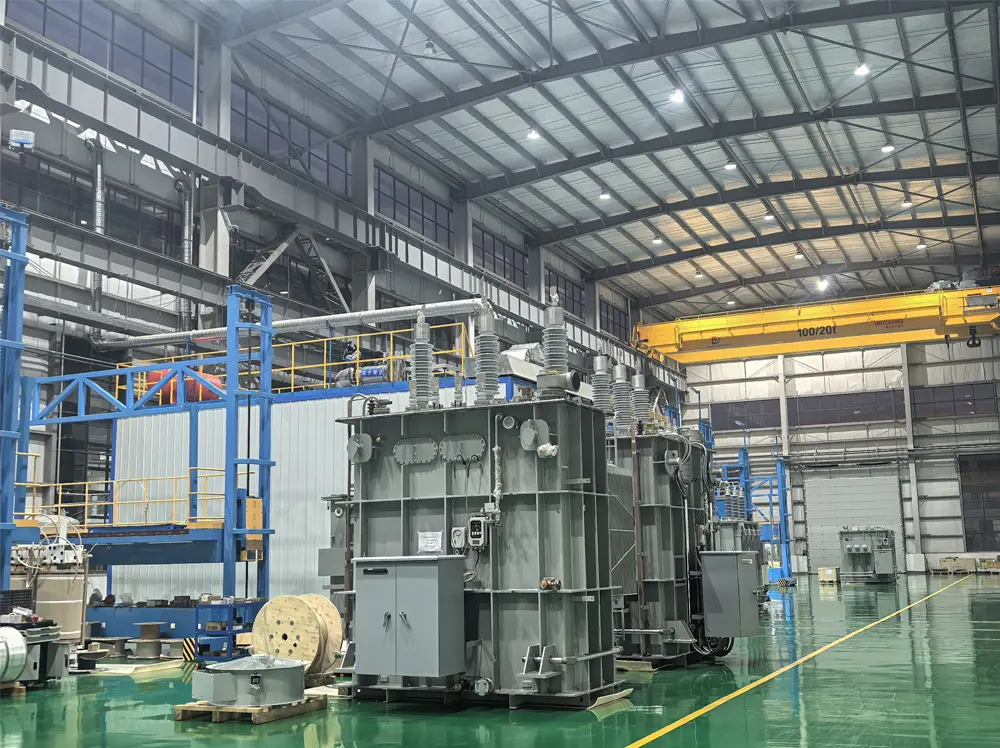
Nuclear power plant Transformers are dedicated electrical transformers and we at DaelimTransformer offer Electrical Transformers of all types and sizes and of different power capacities. Our team of Electrical engineers and designers are fully capable of designing a dedicated Electrical Transformer for nuclear power plants. Each of our Electrical Transformers can satisfy all types of international standards related to the electrical equipment operation and safety of the nuclear power plant. If you have any questions related to the nuclear power plant transformer you can contact us and our team will help you through the process.
Related Products
Related Article
12 MVA Transformer for Pharmaceutical Manufacturing Operations in Puerto Rico
In 2024, a pharmaceutical manufacturer in Puerto Rico required a reliable power solution to ensure continuous, safe, and efficient operations in a humid, storm-prone climate. Daelim delivered a custom 12 MVA three-phase oil-filled transformer, designed for seamless substation integration, engineered and tested to IEEE and industry standards, meeting stringent pharmaceutical production requirements.
2MVA Live Front Transformer for a Residential Community in Canada
In 2024, a new 300-resident building in Ontario required a robust power solution to withstand extreme weather and meet rising urban demands. Daelim Transformer supplied a 44 kV 2 MVA live-front transformer, designed for dense residential environments. Installed in fall 2024, it now ensures safe, reliable electricity for daily needs and essential communal systems.
Strengthening Electricity Distribution Infrastructure in Canada through 500 kVA Platform Transformers
In 2024, a Canadian utility launched a grid modernization initiative to meet rising electricity demand. Central to the project were 60 custom 500 kVA single-phase platform transformers from Daelim Transformers, enhancing distribution reliability and service quality for hundreds of thousands of residential and small commercial customers across urban, rural, and remote communities.
All you need to know about transformer surge protection
Transformer surge protection ensures electrical transformers remain safe, reliable, and efficient by guarding against power surges caused by lightning or internal faults. The system uses sensors and protective mechanisms to prevent damage or failure. Understanding its components, operation, and recent advancements helps enhance transformer performance, minimize losses, and maintain continuous, safe electricity supply for industrial and residential use.
Fundamental of Medium Voltage Transformer
Medium voltage transformers regulate electricity between generation and distribution systems. They operate at intermediate voltages, ensuring efficient power transfer. This article explains their structure, working principles, components, applications, maintenance, and installation requirements, emphasizing their crucial role in stable, safe, and reliable electricity distribution networks.
K Factor Transformer Explained
In modern electrical systems, nonlinear loads are common in residential, commercial, and industrial applications, creating harmonic currents that stress transformers. The K-factor is a key transformer rating that measures its ability to handle these thermal effects and operate reliably under complex conditions. This article explains the basics of K-factor transformers, essential design considerations, and how they differ from standard transformers.

